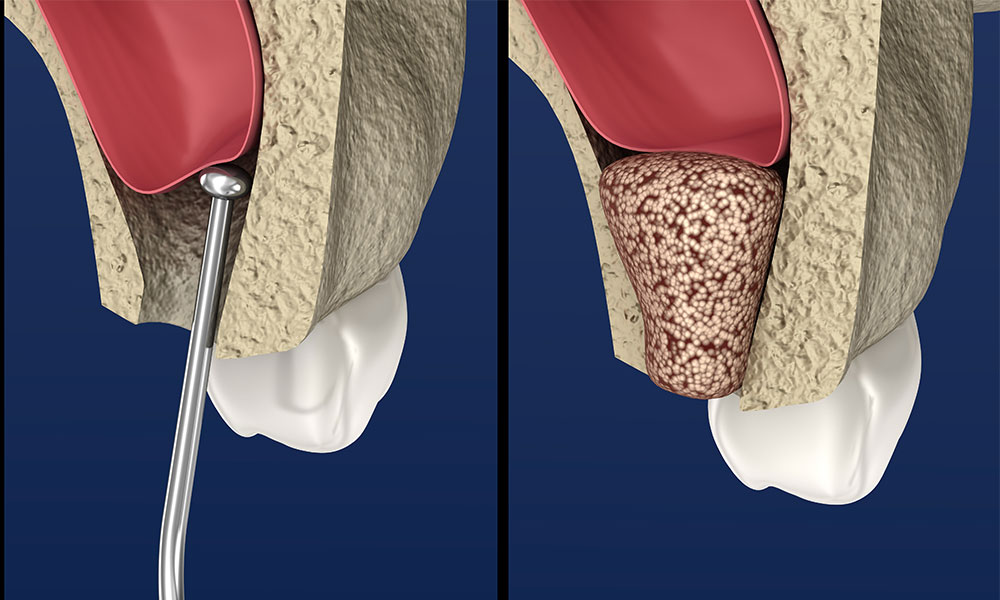Lost or cracked teeth take a toll on your appearance & smile. The dwellers of Coconut Creek mostly feel less confident in their smiles due to their higher inclination toward sugary beverages, which leads to the loss of teeth. Therefore, a coconut creek emergency dentist prioritizes dental implants as the most crucial thing to safeguard patients from weakening the jaw bone, impacting the integrity of their facial structures. Based on the time span a tooth has been extracted or missing & whether the bone has encountered resorption, you might need an additional preparatory step before the insertion of an implant. Here comes a bone graft or a sinus lift.
Comprehending the Basics of Sinus Lift and Bone Grafts
They are different from one another but previously used to accomplish a similar task. Both treatments provide a robust and legitimate platform upon which a dental implant can be placed. In a quick surgical operation, a bone graft uses an isolated piece of bone from a living being, donor cells, or another area of your body. It is then inserted into the gumline and permitted to heal afterward.
Contrarily, a sinus lift is similar to bone grafts, but the process is performed on the upper teeth. A small incision is made in the gum tissue where the sinus membrane is withdrawn, and bone powder is pressed into that region. This bone will merge with the adjacent tissues gradually to reinforce it.
Distinctions Between Sinus Lift and Bone Graft
Signs of a Sinus Lift
- Sinus expansion – Sinus lift is necessary when the maxillary sinus has broadened into the region where teeth have been lost, minimizing available bone for dental implants.
- Inadequate Bone Height – Dental implants can’t be done due to the inappropriate vertical bone height in the upper jaw.
- Bone Loss: Bone loss is caused by trauma, periodontal disease, or long-term tooth loss.

Signs of a Bone Graft
- Dental Implants – Bone Graft is essential when there’s inadequate bone for the dental implants to be performed.
- Bone Loss – Long-term tooth loss, periodontal disease, or stress leads to bone loss.
- Jaw Distortions – Fixing inherited or accidental distortions of the jaw.
Procedures for Bone Graft
- Preparation – An evaluation is done to assess bone quantity and quality using X-rays and CT scans.
- Incision & Access – A small cut is made in the gum tissue to unveil the jawbone.
- Bone Grafting – The right bone grafting material is in the lacking zone.
- Stabilization – The graft material is placed in its ideal location with the screws or membranes.
- Recovery – The gap is shut, and the area takes a few months to heal when the graft integrates with the present bones.
Procedures for Sinus Lift
- Preparation – A precise assessment, including CT scans and X-rays, is performed to evaluate the anatomy and ascertain the degree of bone loss.
- Incision & Access – A tiny incision is made in the gum tissue to unveil the jawbone.
- Sinus Membrane Lifting – A tiny window is made in the bone to lift the sinus membrane delicately.
- Bone Grafting – The area left open by raising the sinus membrane has been stuffed with bone graft material.
- Recovery – The gap is shut, and the area takes a few months for the new bone to combine and become normal.
Conclusion
Based on your oral health level and the condition of your jaw tissue, both procedures take approximately 3-9 months for recovery. Also, the bone graft must be stable to support a dental implant. As the dental implant takes approx 3-6 months to heal, the required time for the entire treatment for a sinus lift or bone graft with a dental implant is a year, although this may differ.

